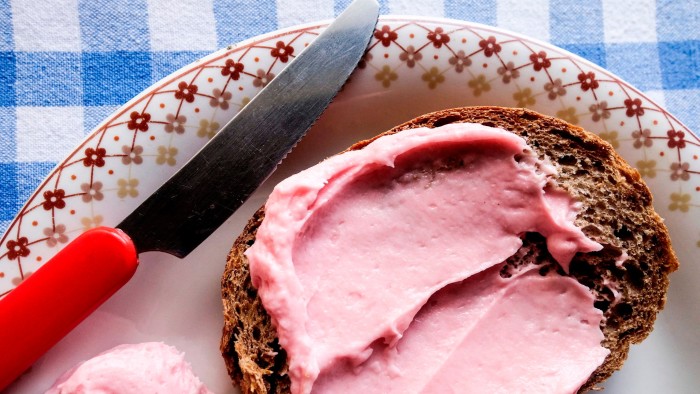Buying the dip — does anyone eat taramasalata any more?

Unlock the Editor’s Digest for free
Roula Khalaf, Editor of the FT, selects her favourite stories in this weekly newsletter.
The writer is the FT’s food critic
There’s a strong consensus forming in the US that the Democrats lost so catastrophically partly because the liberal establishment and “mainstream media” failed to understand the majority of the electorate at some fundamental level. I thought it could never happen here in the UK — until, that is, this week and the full-on moral panic around “Taramagate”.
You may, quite justifiably, have been sequestered in your bunker for a few days, so let me explain. A perfectly simple bit of industrial action at the Bakkavor factory in Lincolnshire meant that a couple of batches of taramasalata weren’t made. As a consequence, supermarket shelves are now denuded of the fishy slurry. There’s a genuine taramasalata famine. And, of course, the press have gone ape.
You’d think, with the world staring over the rim of geopolitical oblivion, that there might be a more appropriate target for analysis, but no. Hundreds of words have been written on the desperation to which an entire segment of society is reduced without this “staple of middle-class dinner parties”. Social media is afire with properly punctuated hysteria. Panic on the streets of Hampstead. Understated greige cashmere garments are being rent.
But it’s all utter, utter balls.
Taramasalata’s mercifully brief flowering occurred in the late 1970s when half the commentators in the country were gentrifying the same grotty postcodes of north London that were also filling up with displaced Greek Cypriot families. You got your gig on The Guardian, you bought an agreeable five-storey Victorian house in Camden Town that used to be home to five different families. You knocked through the basement, had the floor strengthened and installed an Aga. For your first dinner party, you invited all your mates round and got what you delighted in calling “peeta bread” from the deli at the end of the street, along with a big tub of taramasalata. Later on, you wrote about it for the “colour supplement”.
Perhaps no one invites journalists to dinner parties any more. But after a rushed polling of my food-obsessed (and painfully middle-class) mates, I haven’t been able to verify a single sighting of taramasalata in the wild since around the turn of the century.
In fact, as far as anyone could remember, it was about the time that someone wrote The Foodie Handbook, shouty chefs began appearing on television and gastropubs sprouted in our neighbourhoods that we started hearing the first jokes about ghastly, turgid middle-class dinner parties, with neon-pink “dips”.
I’m sure taramasalata was bloody gorgeous when eaten in a taverna in Cyprus, but by the time it got here it looked like toothpaste and smelled like a burnt trawler. That’s probably why an entire generation has since passed over it. Meanwhile, “whipped smoked cod roe”, has mysteriously replaced it. A reassuringly beige fish-paste, British-sounding and comfortably St Johnny.
I haven’t, by the way, been able to find much British historical precedent for smoked cod roe before the gastropub boom. I doubt the horny-handed sons of Lowestoft or the besweatered and shantying fisherfolk of Padstow ever really bothered to haul out fish gonads, salt and smoke them and then pipe them decoratively over their own house-baked spelt sourdough. They couldn’t be arsed.
I’m pretty sure that smoked cod roe, still on half the menus in London when in season, is a shameless appropriation of something that was already a weary joke back when Jamie Oliver’s voice was still breaking. So do me a favour: if you know a journalist, invite them to dinner. They are, in the main, adequately house-trained and their expectations are clearly a couple of generations old. I think some of them haven’t even heard of Ottolenghi.
#Buying #dip #eat #taramasalata




